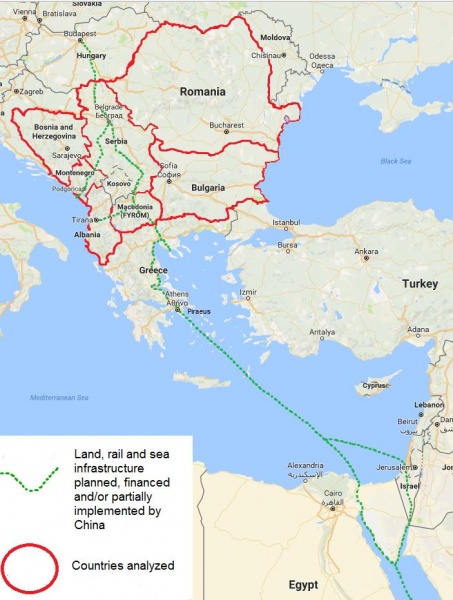References
Barisitz, S. and Radzyner, A. 2017a. The New Silk Road, part I: a stocktaking and economic assessment. OeNB. Focus on European Economic Integration Q3/17. August.
https://www.oenb.at/Publikationen/Volkswirtschaft/Focus-on-European-Economic-Integration.html
Barisitz, S. and Radzyner, A. 2017b. The New Silk Road, part II: implications for Europe. OeNB. Focus on European Economic Integration Q4/17. December.
https://www.oenb.at/Publikationen/Volkswirtschaft/Focus-on-European-Economic-Integration.html
Grübler, J. and Stehrer, R. 2017. Die Chinesische Investitionsoffensive „One Belt, One Road“. Wirtschaftliche Potenziale für Österreich? Wiener Institut für internationale Wirtschaftsvergleiche (wiiw). Policy brief no. 33. February.
Hollinshead, G. 2015. Deconstructing the Sino-Serbian “Bridge of Friendship”: Discerning Dominant Chinese Logics and Geopolitical Implications. Work and Employment Research Unit (WERU). University of Hertfordshire. Council for European Studies.
Levitin. 2016. China and South-Eastern Europe: Infrastructure, trade and investment links. OECD. July.
Needham. 2014. Reshoring of EU manufacturing. European Parliamentary Research Service (EPRS). March 21. www.europarl.europa.eu/EPRS/140791REV1-Reshoring-of-EU-manufacturing-FINAL.pdf.
Radzyner, A., P. Schneidewind and M. Hahn. 2011. Analysis of needs for financial instruments in the EU Strategy for the Danube Region (EUSDR). Vienna: Metis GmbH. www.danube-region.eu/images/olddocs/FinalReport_09_01_2012.pdf
Sanfey, P., J. Milatovic and A. Kresic. 2016. How the Western Balkans can catch up. European Bank for Reconstruction and Development (EBRD). February 19. www.ebrd.com/news/2016/
how-the-western-balkans-can-catch-up.html
Yalcin, E., G. Felbermayr and A. Sandkamp. 2016. New trade rules for China? Opportunities and threats for the EU. In: European Parliament, Directorate-General for External Policies, Policy Department. Study commissioned by the ifo Institute – ifo Center for International Economics. February. www.europarl.europa.eu/RegData/etudes/STUD/2016/535021/EXPO_STU(2016)535021_EN.pdf
Cambridge Dictionary. www.dictionary.cambridge.org/
ECB. Statistics. www.ecb.europa.eu/stats/html/index.en.html
IMF. International Financial Statistics. www.data.imf.org




